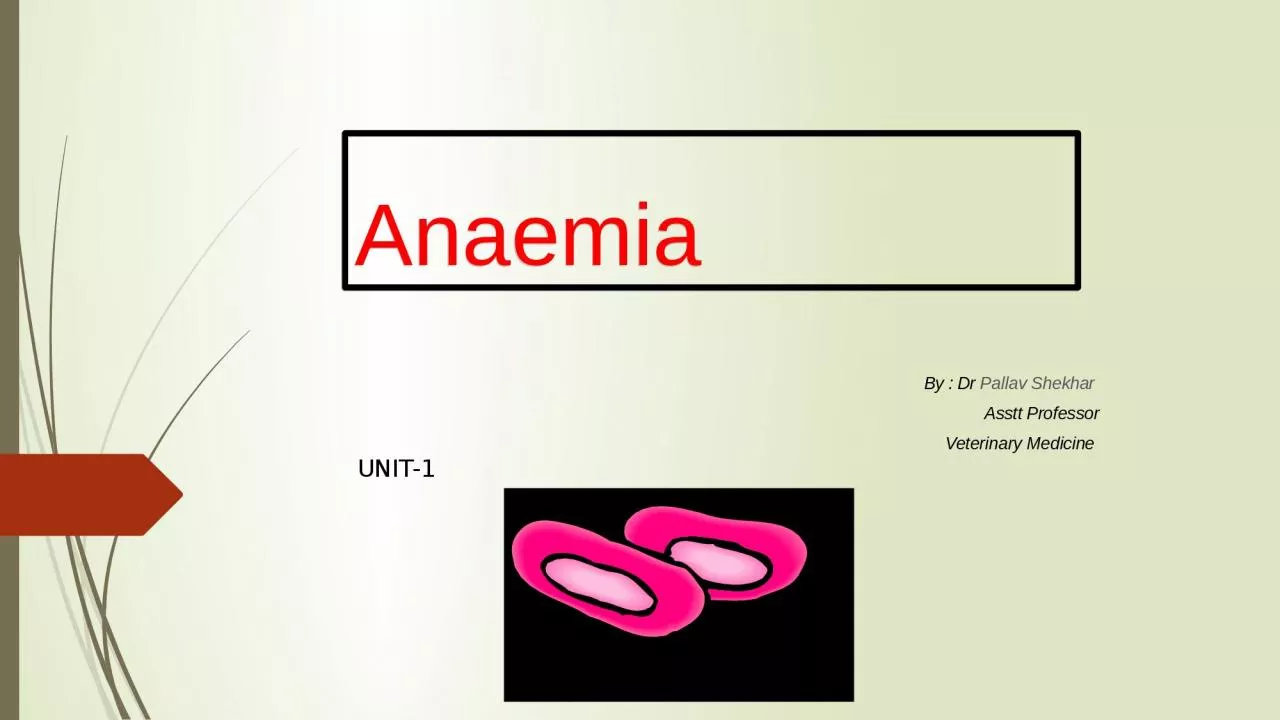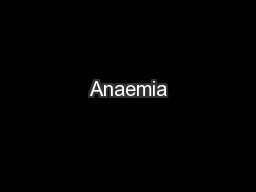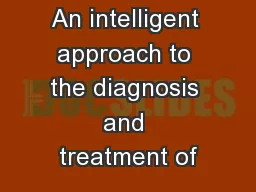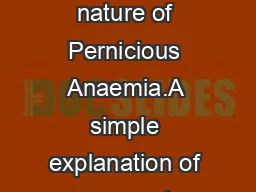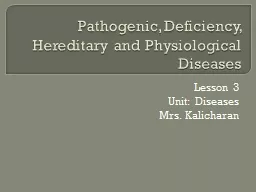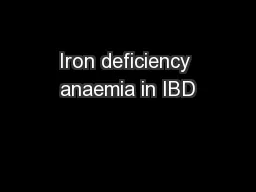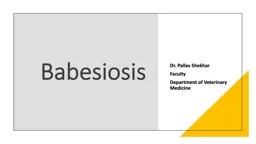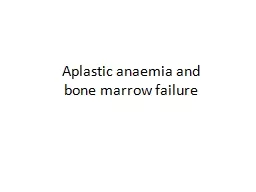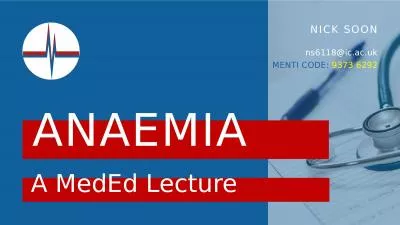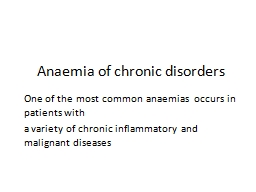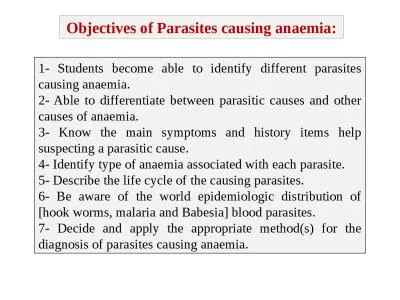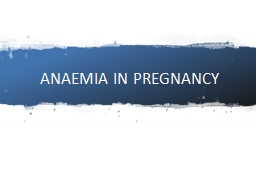PPT-Anaemia By : Dr Pallav
Author : samantha | Published Date : 2023-07-07
Shekhar Asstt Professor Veterinary Medicine UNIT1 Definition and Etiology Anaemia Classification Anemia is classified as Regenerative Non regenerative
Presentation Embed Code
Download Presentation
Download Presentation The PPT/PDF document "Anaemia By : Dr Pallav" is the property of its rightful owner. Permission is granted to download and print the materials on this website for personal, non-commercial use only, and to display it on your personal computer provided you do not modify the materials and that you retain all copyright notices contained in the materials. By downloading content from our website, you accept the terms of this agreement.
Anaemia By : Dr Pallav: Transcript
Download Rules Of Document
"Anaemia By : Dr Pallav"The content belongs to its owner. You may download and print it for personal use, without modification, and keep all copyright notices. By downloading, you agree to these terms.
Related Documents

